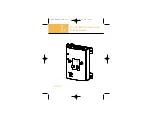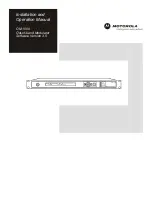
- 5 -
- 5 -
2.3 Description
The Cassettes convert two QPSK-modulated signals into two QAM-modulated
data flows. The Cassettes are controlled via the head-end station.
Each Cassette has two inputs and one HF output.
Each Cassette is equipped with two channel strips (A and B). The channel strips
consist of the digital SAT tuners, the digital signal preparing units and the out-
put converters. The Cassettes´ channel strips are indicated by Box “…A” or
Box “…B” in the control unit display.
The integrated TP module (Transport Stream Processing) processes the data
from the demodulated transport flow. In this way, service information can be
modified (NIT – Network Information Table), data rates can be increased (Stuff-
ing) and individual programs can be deleted from the transport flow, while the
rest of the programs can be transmitted with optimised bandwidth. Furthermore,
the operator ID (required for visAvision, for example) can be set.
The operating software of the Cassette can be actualised via the 9-pin SUB-D-
socket, using a PC or notebook (software “
BE-Flash
”). You can find the current
operating software of the Cassettes on the website “
www.triax.com
”.
The prepared input signals are transmitted to the HF output collector of the head-
end station via the HF output socket. The output level of the cassettes can be set
at the output collector of the head-end station.
After the head-end station has been switched on, the software version of the
control unit is displayed briefly in the two-line LC display and afterwards the
type of Cassette of the first slot.
Approximately five minutes after the last button has been pressed, the software
version of the control unit is displayed.
The Cassettes are designed for use in the following head-end stations:
– CSE
3312
– CSE
3319






































